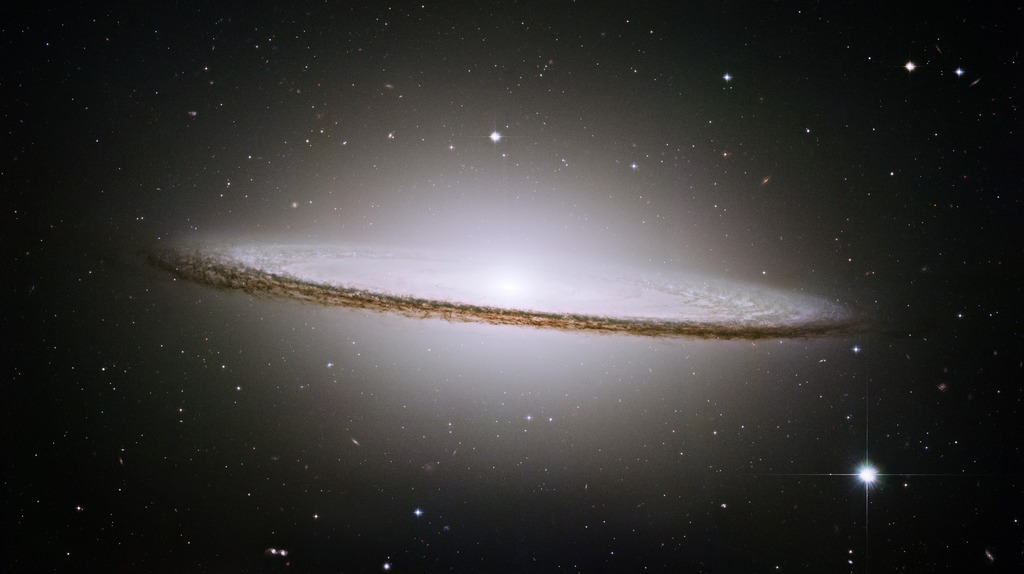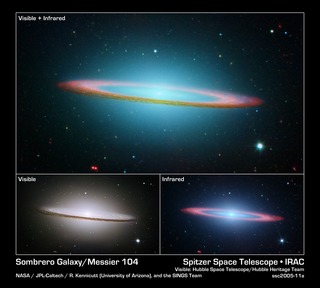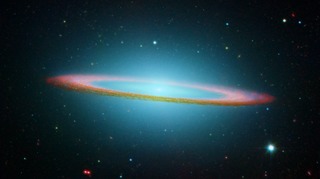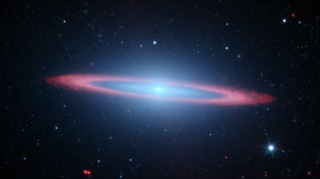
Credit: NASA/Hubble Space Telescope/Hubble Heritage Team
Observation • May 4th, 2005 • ssc2005-11a2
ssc2005-11a2
The Hubble Space Telescopes obtained this image of one of the most popular sights in the universe. Messier 104 is commonly known as the Sombrero galaxy because in visible light, it resembles the broad-brimmed Mexican hat. In Hubble's visible light image, only the near rim of dust can be clearly seen in silhouette.
The Sombrero galaxy is located some 28 million light-years away. Viewed from Earth, it is just six degrees south of its equatorial plane.
The Hubble Heritage Team took these observations in May-June 2003 with the space telescope's Advanced Camera for Surveys. Images were taken in three filters (red, green, and blue) to yield a natural-color image. The team took six pictures of the galaxy and then stitched them together to create the final composite image. This magnificent galaxy has a diameter that is nearly one-fifth the diameter of the full Moon.
About the Object
- Name
- Sombrero Galaxy • Messier 104 • M104 • NGC 4594
- Type
- Galaxy > Type > Elliptical
- Galaxy > Type > Lenticular
- Galaxy > Component > Ring
- Galaxy > Type > Ring
- Distance
- 28,000,000 Light Years
- Redshift
- 0.003416
Color Mapping
| Band | Wavelength | Telescope |
| Optical | 435 nm | Hubble ACS |
| Optical | 555 nm | Hubble ACS |
| Optical | 625 nm | Hubble ACS |
Astrometrics
- Position (J2000)
- RA =12h 39m 59.5s
- Dec = -11° 37' 22.6"
- Field of View
- 9.6 x 5.4 arcminutes
- Orientation
- North is 4.6° left of vertical







